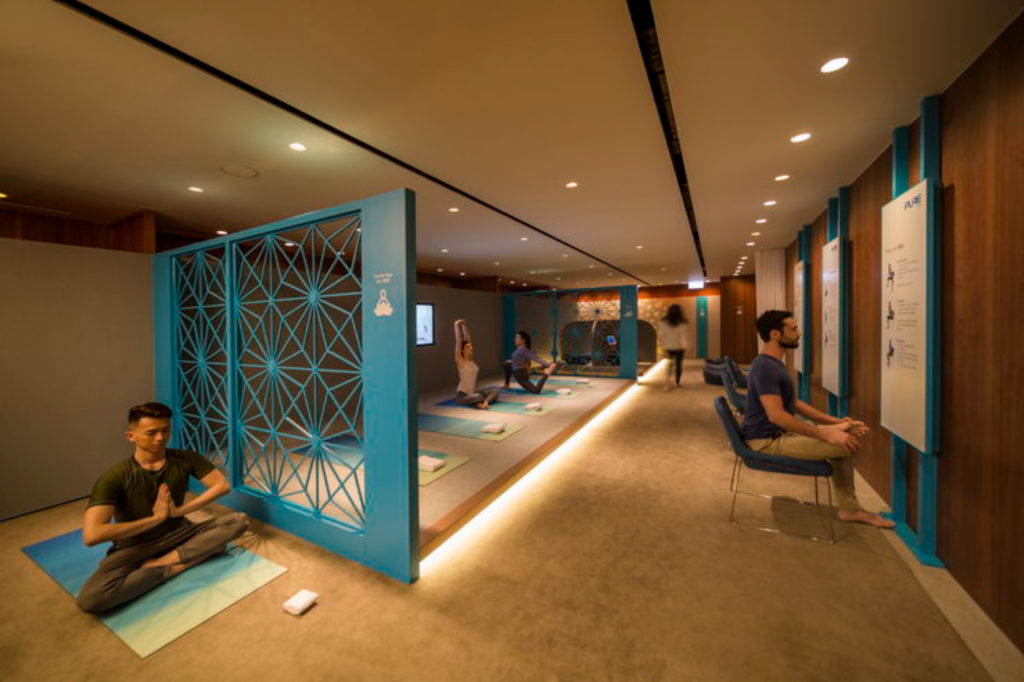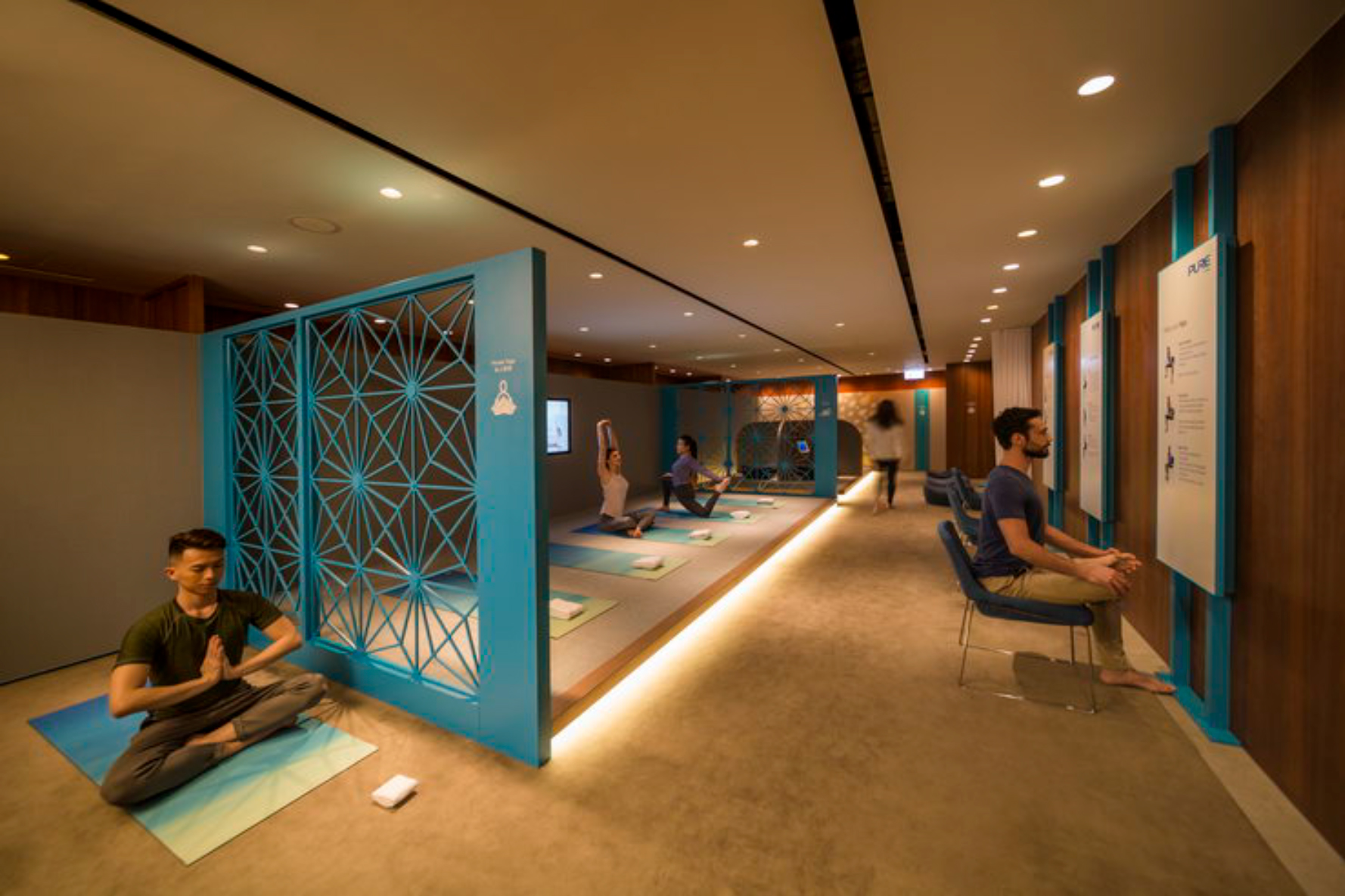Originally published on TravelDailyNews.Asia
Article by Ingo Schweder, Founder & CEO, GOCO Hospitality
The wellness tourism market was valued by the Global Wellness Institute as worth $639 billion in 2017. From 2015-2017, it grew 6.5%. That’s twice as fast as the general travel industry.
Wellness tourism is clearly on the rise. Whether travellers are looking to escape for a two-week yoga and meditation retreat in Rishikesh in the Himalayan foothills, experience a traditional Thai massage, go for a morning run, or just find some good-quality vegan food on their trip, it’s important that those in the travel and hotel industry are aware of and cater to the needs of this important segment.
The wellness tourism market was valued by the Global Wellness Institute as worth $639 billion in 2017. From 2015-2017, it grew 6.5%. That’s twice as fast as the general travel industry. While Europe experiences the most wellness trips, it’s North America that received the greatest expenditure; however, the Asia Pacific region is the place to watch, with the region witnessing the fastest growth (13% per year) in both numbers of trips and expenditure. In addition to this, international wellness tourists spend 53% more on average than a regular international tourist.
Wellness tourists are often trendsetters. They are always on the look out for new experiences and are very well informed about the issues that matter most to them. While wellness tourists are very diverse, this article will set out a few of the key trends in wellness tourism.
1. Travel Well
No longer is it enough to enjoy various aspects of wellness while on holiday. Now, the journey itself needs to be well-ified as well. Long-haul international flights take a lot out of you. The air is stale and recycled, the food is usually terrible and over-salted, you are forced to sit in confined spaces for long periods of time, it is a thoroughly stressful experience, and you arrive totally jet-lagged and exhausted.

While spas at airports are nothing new, the airport experience is getting upgraded. Just recently, Cathay Pacific opened a yoga and meditation space as part of their business-class lounge in Hong Kong. As for during the flight itself, Singapore Airlines has advanced in-flight wellness for their record-breaking Singapore to New York route, where guests face 18 hours and 45 minutes in their seat. To help deal with such a long flight, Singapore Airlines now offers special wellness meals, guided stretching, and has developed lighting to help passengers sleep better. Qantas, meanwhile, has just introduced an anti-jetlag menu to ensure you arrive ready for your new time zone.
2. Medical and Wellness Tourism Merges
Medical tourism has been big for quite some time, with travellers crossing international borders either for better or cheaper medical treatment. Some hospitals with a focus on medical tourism now have patient rooms that don’t look that much different from a regular hotel room. At the same time, wellness resorts, which previously focused mostly on traditional wellness practices such as spa treatments, thermal bathing, yoga and traditional Chinese medicine, are getting more high-tech. At many modern wellness resorts, expect to undergo a battery of medical tests – from blood analysis to ultrasound scans and even DNA testing. Following comprehensive assessment, specialists will develop a completely personalised treatment programme for guests.
3. Multi-Generational Wellness
Most of the established wellness resorts and spas are adults-only places. It has often been considered that children upset the Zen-like atmosphere. This is starting to change in the latest wellness resorts and spas. Wellness is now considered a whole-family affair, as people come to understand that the early years are especially important to total lifetime wellness. Wellness resorts are now offering kid-friendly spas with specially developed treatments. Children are also taking part in meditation and yoga and learning how to cook healthy but delicious food.
At the other end of the age range, senior citizens are also being specially catered for. As our populations age, issues such as Alzheimer’s and dementia are becoming a growing concern. There is increased evidence that a healthy brain can be maintained through a combination of a healthy diet, regular exercise, good sleep and brain-stimulating activities. Wellness resorts are starting to cater for this important market.
4. More Than Just One Vegetarian Option on the Menu
Vegetarians used to think themselves lucky if a restaurant was able to offer just one vegetarian option. This is no longer anywhere near enough. The number of vegetarians, vegans and flexitarians (someone who only occasionally eats meat) is growing rapidly. The percentage of US consumers identifying at vegan grew from 1% to 6% between 2014 and 2017, that’s a 600% increase! The market for plant-based meat alternatives is growing at 17% per year and is expected to be worth $5.2 billion by 2020. Vegetarians and vegans are increasingly picking their hotels based on how well the restaurant caters to plant-based diets and are searching out the very best in vegetarian and vegan cuisine in every city they visit.

Milk alternatives are also highly popular right now. There is now a huge range of different types to choose from. Almond milk has been popular for some time, but the latest trend is oat and sesame milk. Time to offer alternative milkshakes, ice cream and cheese.
5. ZZZZZZZZZ
We used to pride ourselves of how hard we worked and how little sleep we got. This is now changing. Awareness of the vital importance of getting a good night’s sleep is quickly spreading. A lack of sleep doesn’t just make us feel tired, it has been linked to heart disease, high blood pressure, diabetes, depression and obesity. There are many things hotels can do to help guests get better sleep. These include:
- Black-out curtains
- Better quality mattresses
- Master switches that allow complete darkness (no more irritating LEDs shining out at you from the TV)
- Circadian-rhythm-supporting lighting (blue light keeps us awake, yellow/orange light gets us ready to sleep)
- Sleep masks
- In-room meditation and bedtime story apps
- Bath salts and essential oil diffusers
6. Mental Wellness for Truly Transformative Travel
Experiential travel has been a big trend in the travel industry for the past few years. This is now transitioning to transformative travel, where travellers are hoping to return home having experienced a profound transformation in themselves. Positive mental wellness, in its many forms, is a key enabler of this.
Mental wellness has been trending for the past few years, and it is only set to continue. Smartphone apps such as Calm and Headspace have sped the growth of meditation as a mainstream activity. As interest has grown, practitioners are getting more knowledgeable and are seeking out new forms of meditation for specific outcomes.

One of the best ways in which travel can support better mental wellness is through providing travellers with opportunities to truly disconnect, really focus on being in the moment and to enjoy their surroundings. Digital detoxes encourage people to forget about Instagram for a moment and just enjoy the experience of where they are. WiFi for many is an essential hotel facility. Now, there are hotel rooms that purposefully don’t have internet connections and TVs.
We are also seeing a growing interest in nature immersion. With a growing population of people living in urban areas, people are looking to their holidays as an opportunity to recharge by getting back to nature and away from the stresses of hectic urban lifestyles.
7. Greater Variety in Wellness Retreats
Wellness retreats have been a key aspect of wellness travel. The traditional focus has been on yoga and meditation. However, as the wellness travel market has grown, wellness retreats are now offering much greater variety getting highly specific in their focus. There are career-focused wellness retreats (even ones focused on the health problems of DJs), business-focused wellness retreats, women’s only wellness retreats, wellness retreats catering to issues faced by men, and wellness retreats that also combine cultural activities such as writing, pottery, music, performance and cooking.
As the wellness travel market grows, variety and greater sophistication will become a constant trend. Those in the travel industry need to keep a close eye on major developments if they hope to stay ahead of the competition and meet the needs of wellness travellers.

